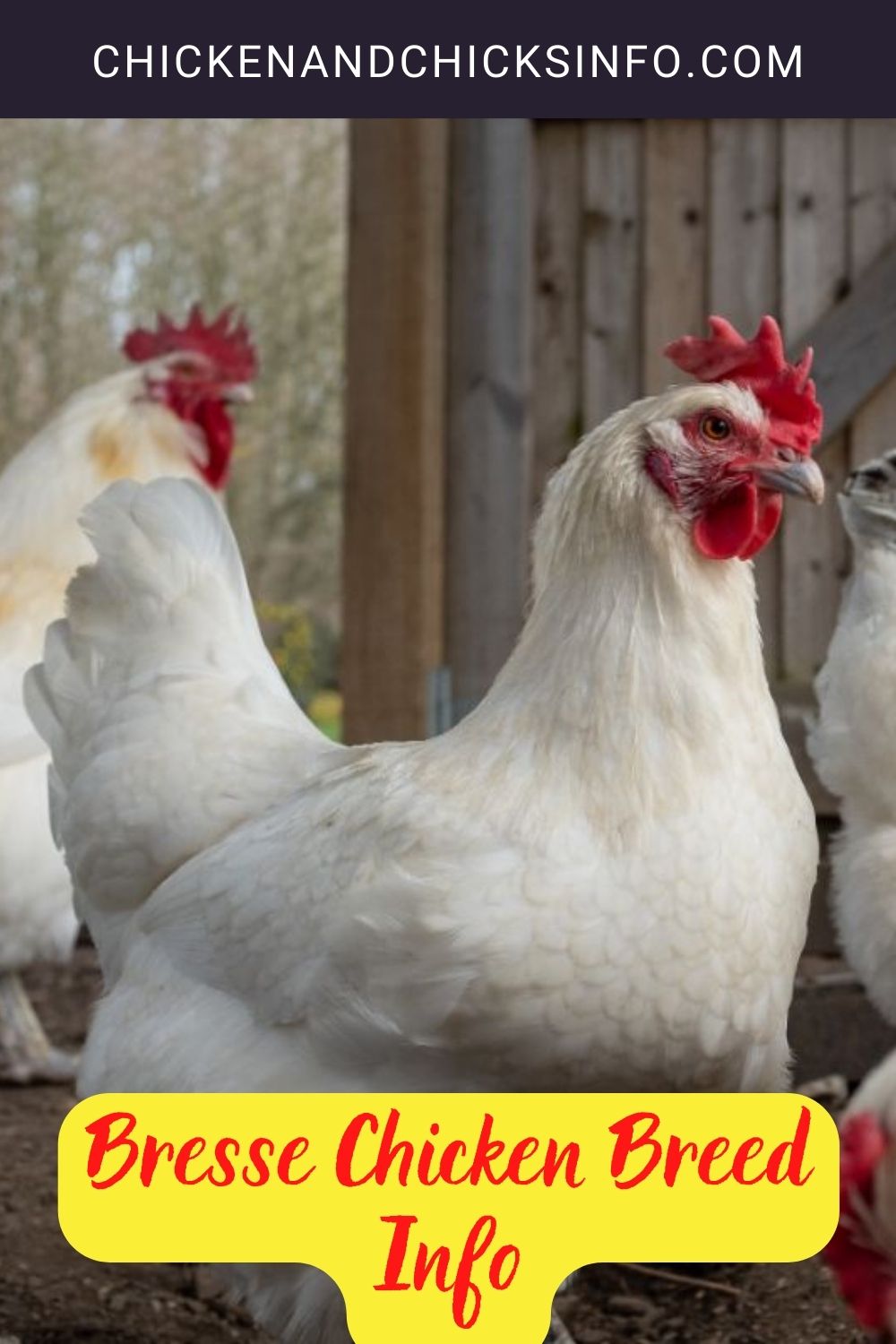This French breed is known as the “queen of chickens.” Although hens produce a good amount of cream-colored eggs, they are known for their top-notch meat.
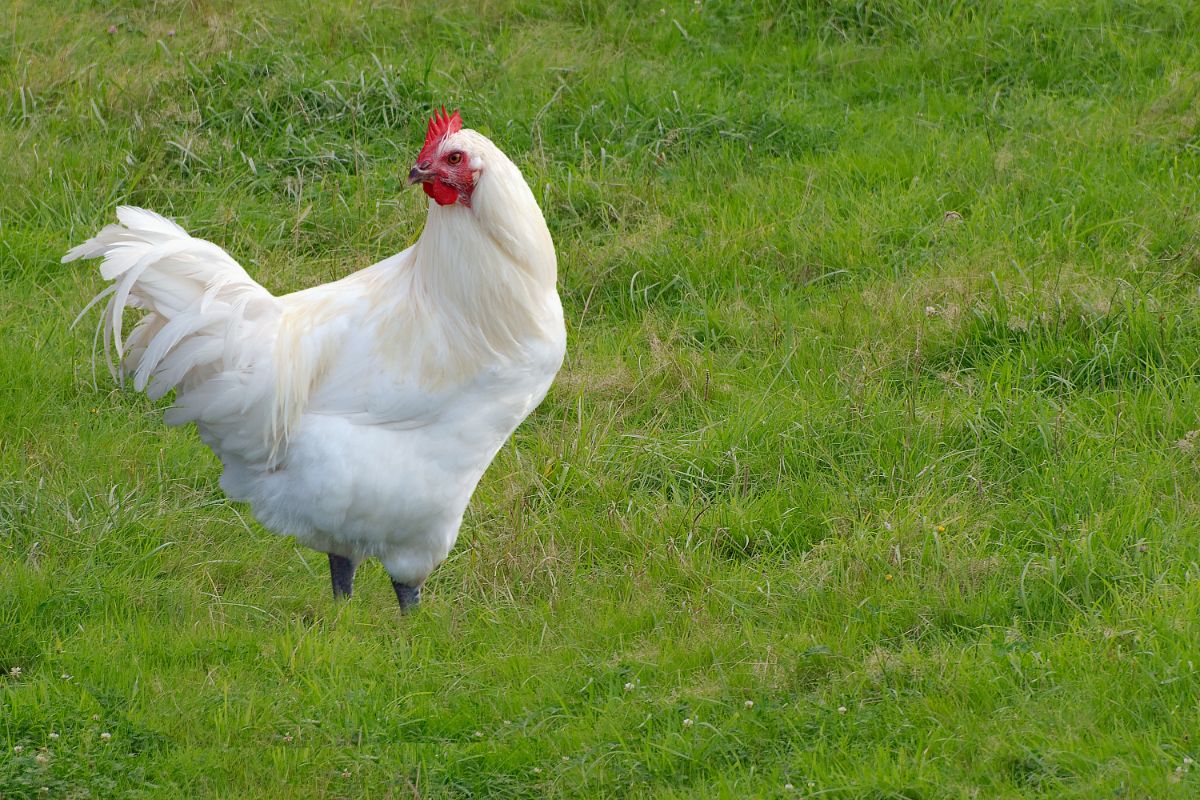
These rare chickens have a unique bone-to-meat ratio. Their thin, dainty bones, large muscle mass, and thin skin contribute to their reputation as the most delicious chickens in the world.
Jump to:

Bresse Chicken Breed Quick Info
Bresse Chicken Description
| Bresse Type/Size: | Standard |
| Feather Color: | White |
| Leg Type: | Clean |
| Leg Color: | Blue |
| Skin Color: | White |
| Bresse Ease of Raising/Keeping: | Difficult |
| Bresse Special Care Needs: | Yes |
| Is the Bresse breed a common, rare, or protected breed of chicken? | Rare |
Bresse Use
| Meat | Yes |
| Eggs | Yes |
| Dual Purpose | Yes |
| Bresse Temperament: | Docile |
| Bresse Ability/Likelihood to Free Range: | Yes |
Bresse Egg Production
| Egg Color | Cream |
| Egg Size | Medium |
| Estimated Number of Eggs Per Year | 230 |
| Likeliness to Brood Eggs/Raise Chicks | Low |
Bresse Meat Production
| Dressed Weight Male | 4 ½ lbs. |
| Dressed Weight Female | 3 ¼ lbs. |
Bresse Climate Tolerance
| Heat | Excellent |
| Cold | Good |
Bresse Age to Maturity
| Number of Months to Reach Full Size | 5 Months |
| Number of Months to Start Egg Laying | 5 Months |
| Number of Weeks/Months to Reach Meat Harvest Size | 16 Weeks |
Bresse Size at Maturity
| Male | 6 ½ lbs. |
| Female | 4 ½ lbs. |
Origins of the Bresse Chicken
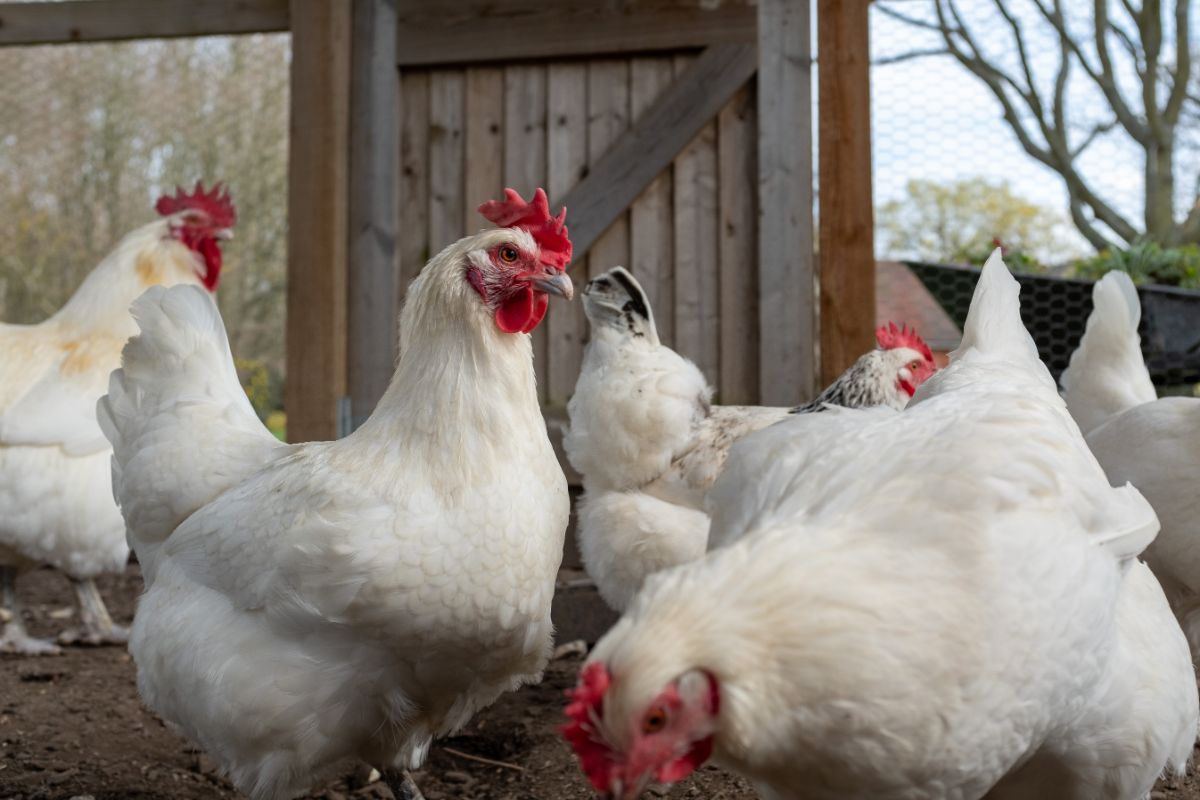
The Bresse chicken originated in the Bresse region of France, and they are still raised there today. In fact, a chicken can’t be certified as a Bresse unless it comes from that region.
About a million birds are raised there by a handful of breeders who have been trained by previous generations on how to raise and process these chickens.
The Bresse first arrived in the United States fairly recently, in 2011. Today, you can find American Bresse sold at American hatcheries. This is a different breed than the original French Bresse. If you want the original, you’ll have to book a plane ticket to France.
Some Things to Know About the Bresse Chicken
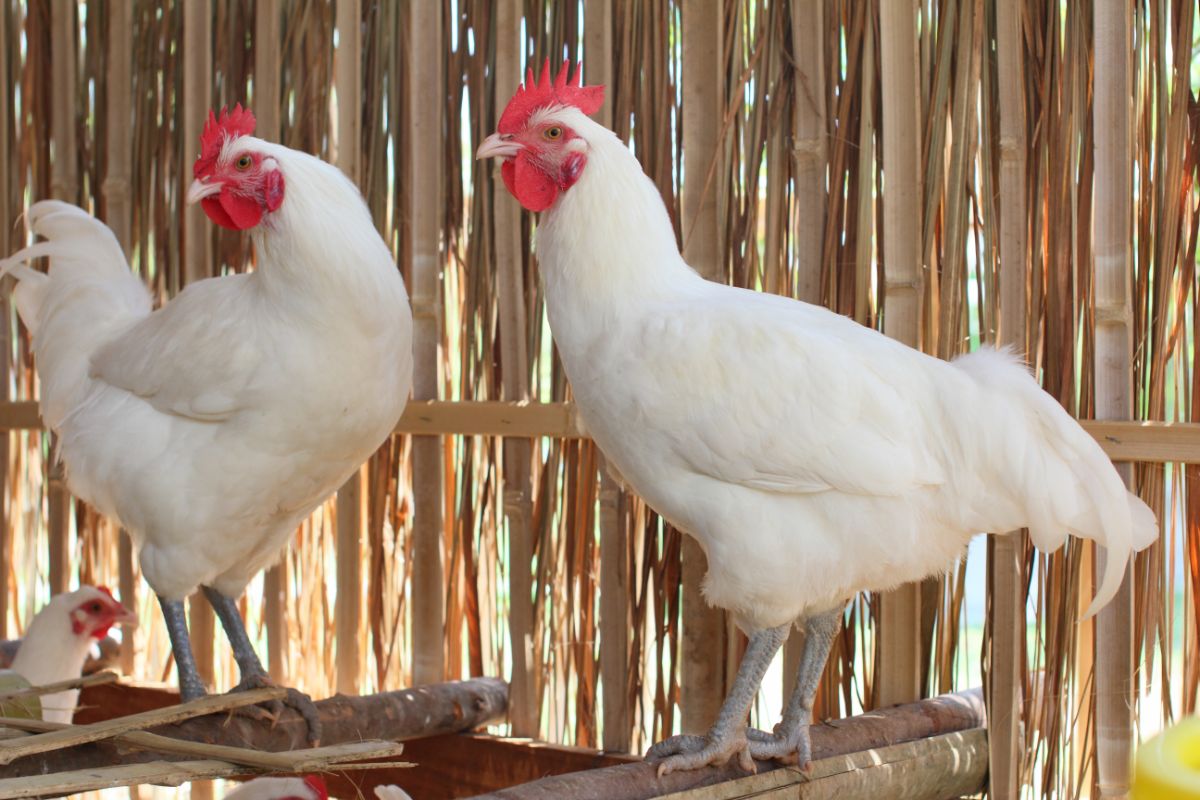
The Bresse proudly display the colors of the French flag: they have a single red comb, bright white plumage, and steel blue legs.
You can also find them in a few other colors, including blue, splash, grey, and black.
How Easy is it to Keep Bresse Chickens?
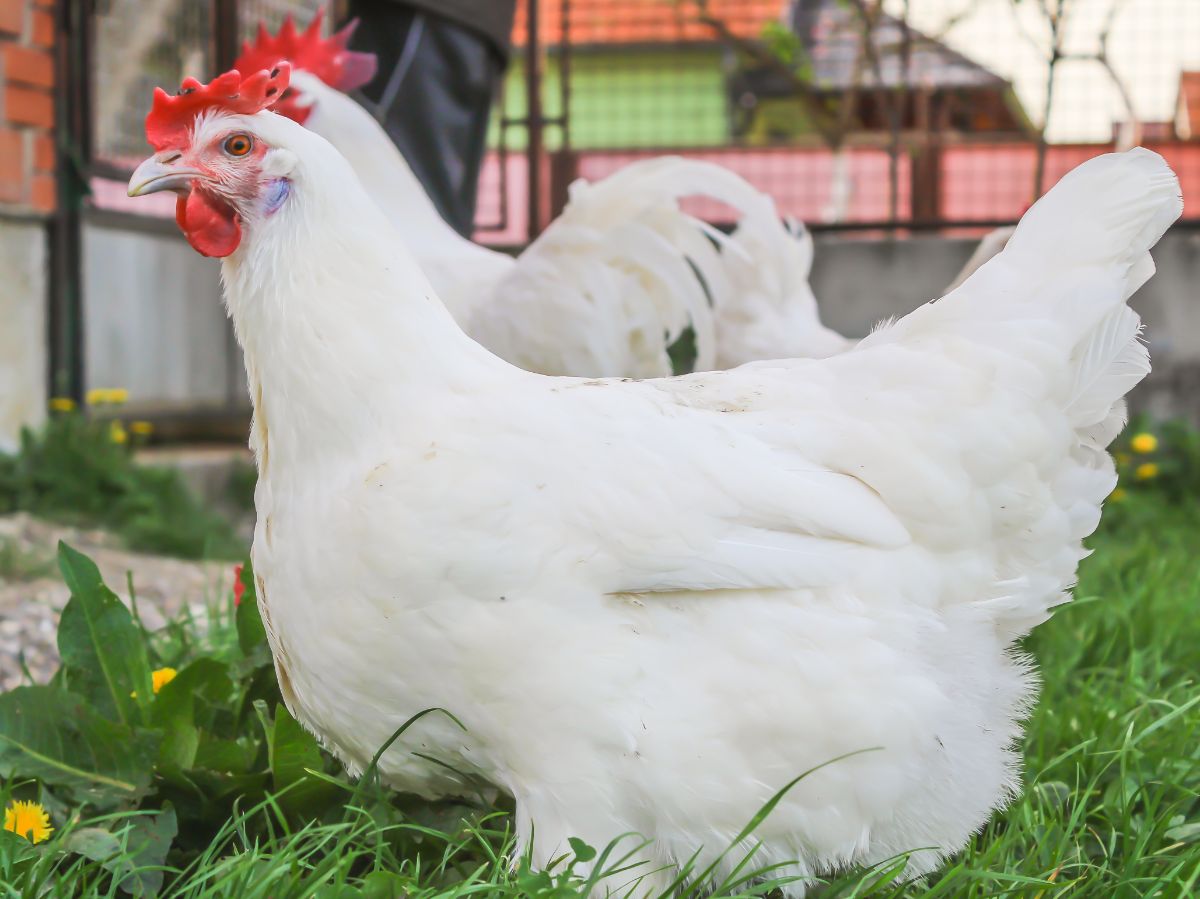
The ease of keeping Bresse chickens is all about how you raise them. In France, the protocol for raising and butchering these birds is strict and somewhat secretive.
As chicks, Bresse are fed a diet of dairy. As they mature, they continue to consume dairy, but corn is added to their diet. They are encouraged to forage for all of their protein from the insects and greenery of the Bresse region (this is one reason that Bresse must be raised in France to be certified as true Bresse).
Even if you replicate this diet with American Bresse, it is unlikely that you will get the same result. French Bresse are genetically unique birds that process feed and distribute fat throughout their body differently than other breeds of chicken, including the American Bresse.
If you plan to raise American Bresse under normal conditions, however, they are a fairly easy breed to care for. They do well in the heat and the cold and are known to have a docile personality.
Special Care and Considerations for Bresse Chickens
Like all chickens with a single comb, there is a risk of frostbite in the winter. A swipe of vaseline over the comb of the Bresse can help to protect it when the temperature drops below freezing.
